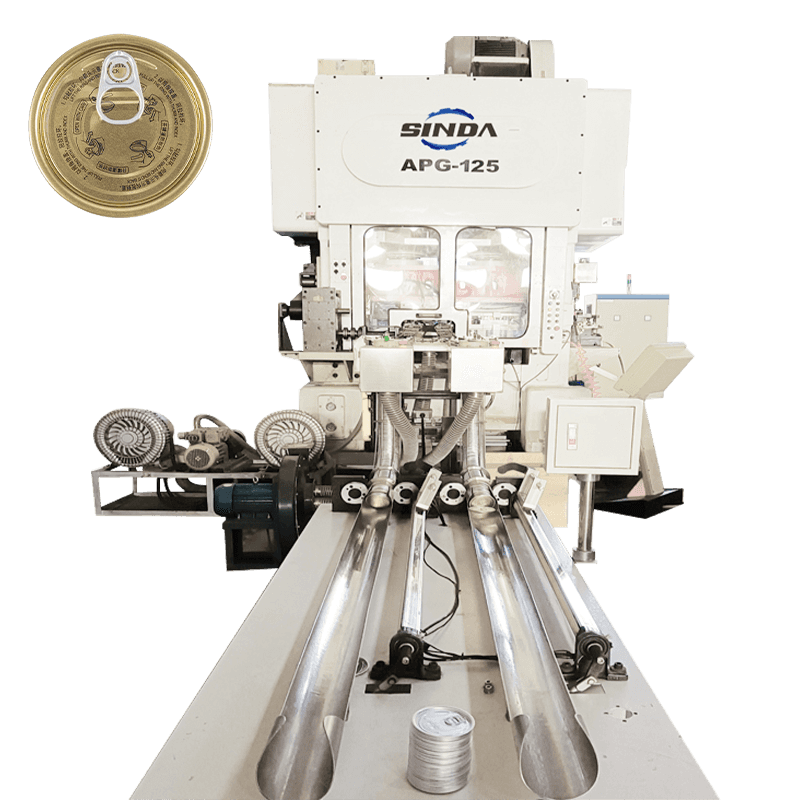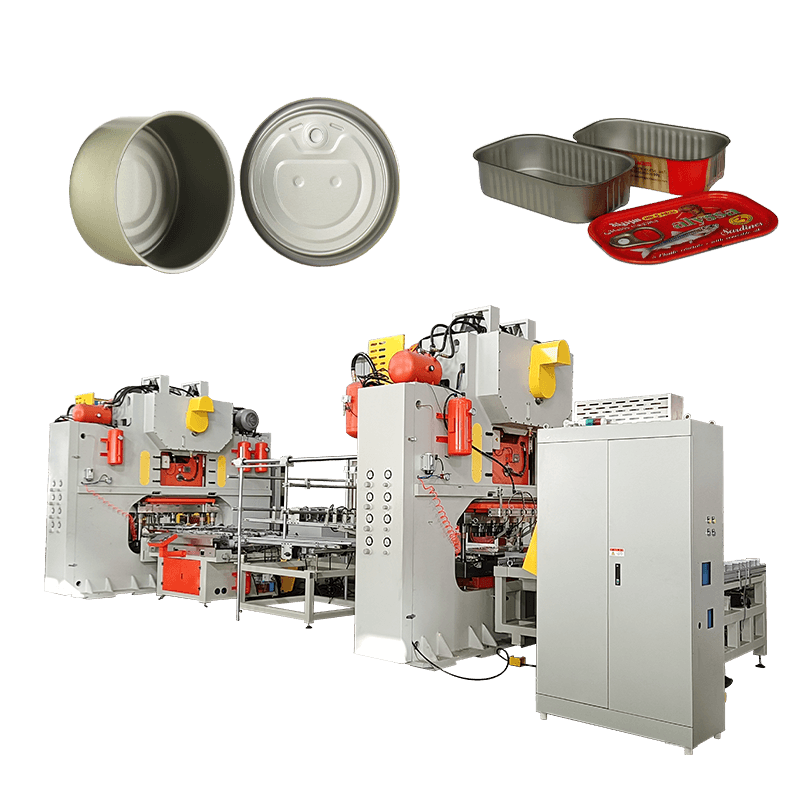How Can We Ensure the Quality and Safety of a 3-Piece Food Tin Can Production Line?
The production of food packaging, particularly 3-piece food tin cans, plays an essential role in the global food industry. As the demand for packaged foods continues to rise, ensuring the quality and safety of these packaging systems is of paramount importance. A 3-piece food tin can consists of three main components: the body, the lid, and the bottom, all of which must meet stringent requirements for food safety, durability, and functionality. The production line, which is responsible for manufacturing these components, needs to be designed and operated in a way that consistently guarantees the safety and quality of the finished product.
Ensuring the quality and safety of a 3-piece food tin can production line involves a combination of proper design, material selection, quality control procedures, regular maintenance, and compliance with industry regulations. In this article, we will explore key strategies and techniques to ensure that the production line is optimized for producing high-quality and safe food packaging cans. The discussion will also address challenges faced during the production process and how these challenges can be mitigated through effective management and technology integration.
Design and Engineering Considerations
The design and engineering of the production line are critical factors in ensuring the overall quality and safety of the 3-piece food tin cans. The machinery and systems used in the production line must be designed to handle the various materials and processes involved, while also maintaining high levels of precision and consistency. The production process for 3-piece food tin cans typically involves stages such as metal sheet preparation, forming, welding, and sealing. Each of these stages must be carefully engineered to meet specific safety and quality standards.
In the design phase, the production line must be equipped with appropriate tools and technologies to minimize defects in the final product. For example, automated inspection systems using cameras and sensors can be integrated into the line to detect any issues with the tin can's shape, size, or surface quality. These systems help ensure that defective products are identified early in the production process and do not make it to the final stages of manufacturing.
Material Selection and Specifications
The selection of materials used in the production of 3-piece food tin cans directly affects both the safety and quality of the packaging. Tinplate is the most commonly used material for food cans due to its strength, durability, and ability to form a protective barrier against corrosion. The tinplate sheets must meet strict quality standards to ensure that they are free from defects such as pinholes, scratches, and rust that could compromise the integrity of the can.
In addition to tinplate, other materials such as lacquers and coatings are used to line the interior of the cans to prevent direct contact between the food and the metal. These coatings are designed to prevent contamination, preserve the flavor of the food, and protect the metal from corrosion. It is essential to use food-safe coatings that comply with regulatory standards to ensure that the cans do not leach harmful substances into the food.
Quality control during material sourcing is vital to ensure that the tinplate and coatings used in the production process meet the necessary safety and quality standards. Regular testing of raw materials can help identify any potential issues before they affect the manufacturing process.
Quality Control and Testing
To guarantee that each 3-piece food tin can produced meets the required safety and quality standards, a comprehensive quality control (QC) system must be in place. This includes inspection and testing at every stage of the production process, from raw material handling to the final packaging of the finished cans. Each production line should have clearly defined QC checkpoints where operators can identify and correct potential issues.
One of the key quality control measures is the inspection of tin can integrity. This involves checking for defects in the cans, such as uneven seams, dents, or rust. Non-destructive testing methods, such as X-ray or ultrasonic inspection, are often used to detect internal defects that may not be visible to the naked eye. Additionally, machines can be programmed to check for the precise measurements of the cans, ensuring that they meet the specifications for size and shape.
Leakage tests are also essential to confirm the can’s ability to maintain a sealed environment for food. These tests help ensure that the can will not allow air or contaminants to enter, which could compromise the food’s shelf life and safety. To maintain the high standard of safety, all cans that fail leakage tests must be removed from the production line and analyzed to determine the cause of the defect.
Maintaining Safety Standards
Food safety regulations are a critical consideration when ensuring the safety of 3-piece food tin cans. Regulatory bodies such as the FDA (Food and Drug Administration) in the United States, EFSA (European Food Safety Authority) in Europe, and other national agencies have set specific guidelines for food packaging materials to ensure that they do not pose a risk to public health. These regulations cover aspects such as the materials used in packaging, the processes involved, and the final testing of the product.
To comply with these standards, manufacturers must implement traceability systems that track each can's journey from raw materials to finished product. This allows for any potential safety issues to be traced back to the source and corrected before they affect the broader production process. Documentation and audits play a crucial role in ensuring that the production line adheres to safety standards.
Preventive Maintenance and Equipment Upkeep
Another important aspect of ensuring the quality and safety of a 3-piece food tin can production line is maintaining the equipment. Regular preventive maintenance of machinery and production lines is essential to avoid downtime, reduce wear and tear, and ensure the continued functionality of critical systems. A proactive approach to equipment maintenance helps identify potential issues before they lead to costly repairs or production stoppages.
In addition to maintaining the machinery, it is crucial to ensure that operators are properly trained in how to use the equipment and identify signs of wear that may affect production quality. Regular training programs should be implemented to keep staff up to date on best practices for operating the production line, monitoring machine performance, and troubleshooting common issues.
Environmental and Safety Considerations
During the production of 3-piece food tin cans, environmental and safety considerations should also be taken into account. The production line should be designed to minimize energy consumption and waste generation, in line with environmental sustainability goals. The use of energy-efficient machinery, recycling programs, and waste reduction strategies can help reduce the overall environmental footprint of the production process.
Worker safety is another key concern. The production line should be equipped with appropriate safety features, including protective barriers, emergency stop systems, and ventilation to ensure a safe working environment. Regular safety audits and the implementation of strict safety protocols help ensure that employees are not exposed to unnecessary risks during the manufacturing process.
Automation and Technological Integration
The integration of automation and advanced technologies into the production line can significantly improve both the quality and efficiency of 3-piece food tin can manufacturing. Automation allows for more precise control of the production process, reducing human error and ensuring that each can is produced according to the set specifications.
For example, automated inspection systems can be used to detect and reject defective cans before they are packaged, preventing them from reaching consumers. Additionally, the integration of data analytics allows manufacturers to monitor the performance of the production line in real time, identifying bottlenecks or areas for improvement. This data-driven approach helps ensure that quality and safety are maintained at every stage of the production process.

 English
English عربى
عربى русский
русский




